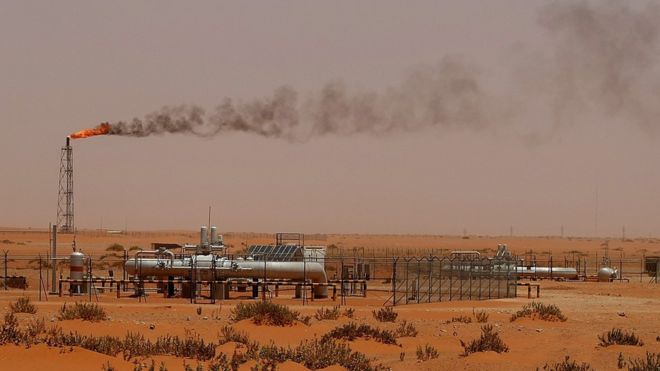-
Tips for becoming a good boxer - November 6, 2020
-
7 expert tips for making your hens night a memorable one - November 6, 2020
-
5 reasons to host your Christmas party on a cruise boat - November 6, 2020
-
What to do when you’re charged with a crime - November 6, 2020
-
Should you get one or multiple dogs? Here’s all you need to know - November 3, 2020
-
A Guide: How to Build Your Very Own Magic Mirror - February 14, 2019
-
Our Top Inspirational Baseball Stars - November 24, 2018
-
Five Tech Tools That Will Help You Turn Your Blog into a Business - November 24, 2018
-
How to Indulge on Vacation without Expanding Your Waist - November 9, 2018
-
5 Strategies for Businesses to Appeal to Today’s Increasingly Mobile-Crazed Customers - November 9, 2018
Saudi prince says goodbye to the ‘Oil Addiction’
The plan, led by Saudi Deputy Crown Prince Mohammed bin Salman and approved by the country’s cabinet, aims to end Saudi Arabia’s reliance on oil by 2020, according to Business Insider.
Advertisement
And the recent dramatic fall in oil prices – from more than $100 a barrel in early 2014 to around $40 a barrel this month – has underscored the dangers.
At the centre of the plan is the restructuring of its Public Investment Fund (PIF), which Prince Mohammed said would become a hub for Saudi investment overseas, partly by raising money through selling shares in Aramco.
The partial privatisation of Aramco was also central to the plans, and Prince Mohammed said it would be transformed into an energy company that he expected to be valued at $2 trillion to $3 trillion, and that less than 5 percent of it would be listed on the stock market. McKinsey Global Institute estimates that Vision 2030 will double the Kingdom’s gross domestic product, increase household income by 60 percent, and create 6 million new jobs by the year 2030.
Bloomberg reported this week that Saudi Prince Mohammed bin Salman’s plan to broaden the Saudi economy includes the creation of a sovereign wealth fund that would eventually hold more than $2 trillion in assets.
The deputy crown prince’s glimpses of the new package of economic and social policies included the much-hyped IPO of Saudi Aramco as well as green card for expatriates and plans to tackle unemployment and proposal to enhance participation of women in country’s workforce.
He said the economic goals of the overhauls are meant to eliminate housing and unemployment problems and ensure that water and energy subsidies go to those most in need.
For decades Saudi Arabia, the world’s biggest crude exporter and the largest economy in the Arab world, has enjoyed a huge windfall from its massive and easily exploitable oil reserves. The country restructured its state-controlled Public Investment Fund by selling shares of state-owned oil company Aramco, encouraging Saudis to invest overseas and moving towards controlling 10 percent of global investment capacity. “It is estimated at between $2 trillion and $2.5 trillion”, Prince Muhammad told the channel.
“Initial data say the [Public Investment] Fund will have control over more than 10 percent of global investment capacity”, Prince Mohammad added. Initially only around 5 percent of Aramco will be on offer, though many analysts suspect that if the IPO is successful the figure will rise.
The Washington-based International Monetary Fund said the Saudi agenda was “ambitious” and “far-reaching”, although the agency warned it would be hard to implement the plan. He has since worked with a group of technocrats to slash expenditures, reform energy subsidies and lay out a vision for a post-oil economy.
Advertisement
Jason Turvey, Middle East economist for Capital Economics, said that because plans for the fund reflect a shift of balance sheets rather than any new assets, it will not reduce the government’s dependence on oil revenues.





























